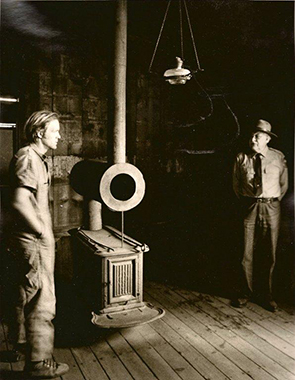My name is Johnson Adams, I’m reporting for The Huffington Post. The year is 2084. I’m on board Bloc #342, on my way to a place called the Dark Side Of The Moon Chicken Ranch. I’m hitching a ride with Ann Chu, 23, a farmer from Kunming, Yunnan, China, and Randy Conklin, 25, a mechanical engineer from Fulton, Missouri, USA. Ann and Randy are beginning their first four-month work tour up at the Chicken Ranch, and are very excited about it. Most people pay hundreds of thousands of dollars for moon trips, so Ann and Randy are glad they’re being paid to go there. Tourism is by far the biggest lunar industry.
I’m writing about more than just getting to and living on a Chinese moon chicken ranch: I intend to add what I can to the already abundant literature on 21st-century Asian global dominance, and the corresponding American decline, commonly known as the ‘Old Dog Drop.’
I met up with Ann and Randy in the reception area of the Chinese Moon Building on the outskirts of Naggu, in the middle of the Tibetan Plateau. The Chinese-Tibet railroad brings everything and everyone up here — the altitude cuts the hardest three miles out of the space trip. Attached to the Naggu terminal were dozens of ZipLines, stretching twenty-two thousand miles up to the Geostationary Earth Transfer Station. On the fifteenth of May, the day after meeting up with Ann and Randy, we three boarded Bloc #342, a ten-ton self-contained, plastic module with a volume of about two thousand cubic feet, shaped to eventually, along with 541 other identically shaped blocs, fit together in a perfect sphere a hundred yards across, to become Chicken Ranch Sphere Number Two. As sphere #2 had yet to be assembled, when we get up to the Ranch, we will transfer to Block #118 of Chicken Ranch #1, a much smaller sphere, about forty yards across, which has been up and running for a couple years.
With the helium lifting balloon steadily filling, suddenly we three were off and rising, going up the ZipLine. Averaging over 700 miles an hour, the trip up took over thirty hours. The helium balloon which had brought us up was compressed, unhooked, and moved over to a ZipLine returning Blocs to earth. Secured to a couple dozen other Blocs and a space Tug, we waited for the right moment to take the slow trip out to the moon. Leaving the transfer station, the tug, using impact engines, steadily boosted our cruising speed from 6,000 mph to about 20,000 mph. The trip out to the moon took us about five days. We passed the time floating around the cabin, thoroughly enjoying the weightlessness, gazing out the windows, playing hundreds of hands of Texas Hold-Em. Weightless sleeping in our hammocks was luxurious– no reason for any part of your body to feel uncomfortable. As we got to know each other, we talked more of our history, and present-day realities. Cheap space travel had given humanity a real boost, and, though there were still way too many people on earth, the consensus was, with more space travel and colonization, the value of each human life on earth will greatly increase. Randy and I talked extensively about sinking America. Ann maintained her Asian cool, and avoided piling on. Ann claimed that Asian success was based on positivism, and taught Randy and I her adaptation of “Forever Young,” a Bob Dylan song:
“May your hands always be busy,
Your feet always be swift.
May you grow up to be righteous,
And to always know the truth.
May all your wishes come true.
May you build a ladder to the stars,
And see the lights surrounding you.
Be courageous, stand upright, be strong.
May your heart always be joyful,
And may your song always be sung.”
Randy kept saying this was the American philosophy of life during the 1960s when the song was written. The decades following that period turned out to be terrible for the country: blind arrogance and greed, by businessmen, industry, and government, everyone conspiring to outdo the next person, along with a disastrous reliance on fossil fuels.
It took Ann, Randy and I seven days to get to the moon, puttering around the earth at about 20,000 miles per hour. As we dropped into a lunar orbit, circling the moon along its equator, I saw for the first time the lines up close: the band circling the moon’s equator, and the band running the other direction, circling the moon from pole to pole. I don’t know why we keep saying the moon has poles, because it stopped spinning millions of years ago. The constant tugging of the earth’s oceans, creating the tides, eventually brought the spinning moon to a standstill, making the same side constantly facing the earth. And then lava flows from the moon’s molten core, tugged by the earth’s gravity, flowed out onto the Earthside surface, filling in the deeper craters.
Meanwhile, the moon’s Backside (mistakenly called the Dark Side), remained much rougher and meteor-pocked, and remains so to this day. Both sides get the same amount of direct sunlight, but what the Earthside gets and the Backside doesn’t is Earthlight: sunlight reflected off the earth. All the hotels and tourist accommodations, of course, are on the Earthside, for the spectacular view. The moon’s Backside is used more for industrial activities: mining, manufacturing, chicken ranching.
It turns out, the ZipLine system for traveling to and from the moon’s surface was more complicated than it was on earth, but the fact that there was only a sixth of the gravity involved helped. The problem was there couldn’t be any synchronicity, because the moon didn’t rotate: the orbiting transfer station had to maintain a speed of 210 miles an hour to stay in orbit, while the moon below it stood still. The Chinese love and skill with railroads came in handy here, because these twin bands encircling the moon are actually two sets of four-track railroad beds, use for transportation on the moon’s surface, while also serving a special purpose in arrivals and departures. The arrival transfer station orbited directly above the north-south band of railroad tracks. After the ZipLines were attached to a train positioned underneath, each Bloc was lowered onto a rail car by the same helium balloon method. Similarly, departing Blocs were loaded onto rail cars on the east-west tracks, and when the train got positioned under the orbiting transfer station, ZipLines were dropped, attached to the rail cars, and the Blocs uploaded through the same balloon method.
Finally, Ann, Randy, and myself landed on the moon! More later when we get settled in at the Chinese Chicken Ranch.

